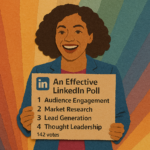Today, LinkedIn has become an indispensable tool for seeking job opportunities and establishing professional contacts. With millions of registered users on this social network, it is a perfect place to generate leads and expand our network of contacts.
An effective way to do this is by sending cold emails to people we consider interesting for our professional goals or what is known as leads. In this article, Growth-X experts will show you how to do this using some LinkedIn automation tools.

As Head of Customer Success, Lusine specializes in helping businesses achieve measurable growth by transforming underperforming campaigns into success stories. Lusine writes impactful articles that reflect her deep expertise in social media strategy and digital marketing, offering insights that drive engagement and deliver results. Combining data-driven analysis with a focus on client success, she makes sure every strategy aligns with business goals and exceeds expectations


LinkedIn became a powerful platform for professional engagement in the business-to-business landscape. Among its many features, LinkedIn Polls stand out as an underutilized yet highly effective tool for…

Social media isn’t just for sharing memes and vacation photos anymore. It’s one of the richest sources of real-time data available, and if you know how to tap…

In the present digital business landscape, LinkedIn stands as a powerful platform for professional networking, brand promotion, and B2B marketing. As of today, with over 1 billion users,…